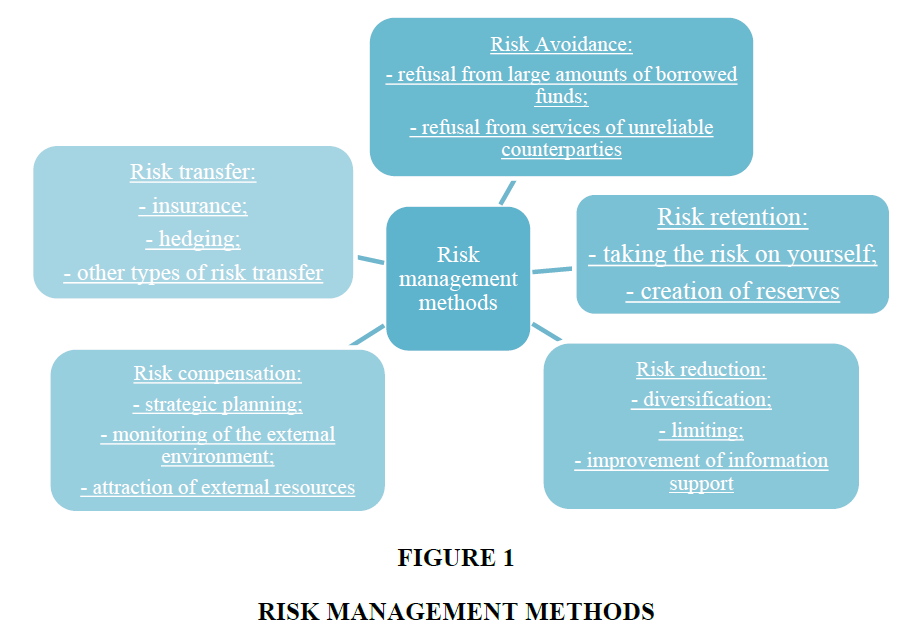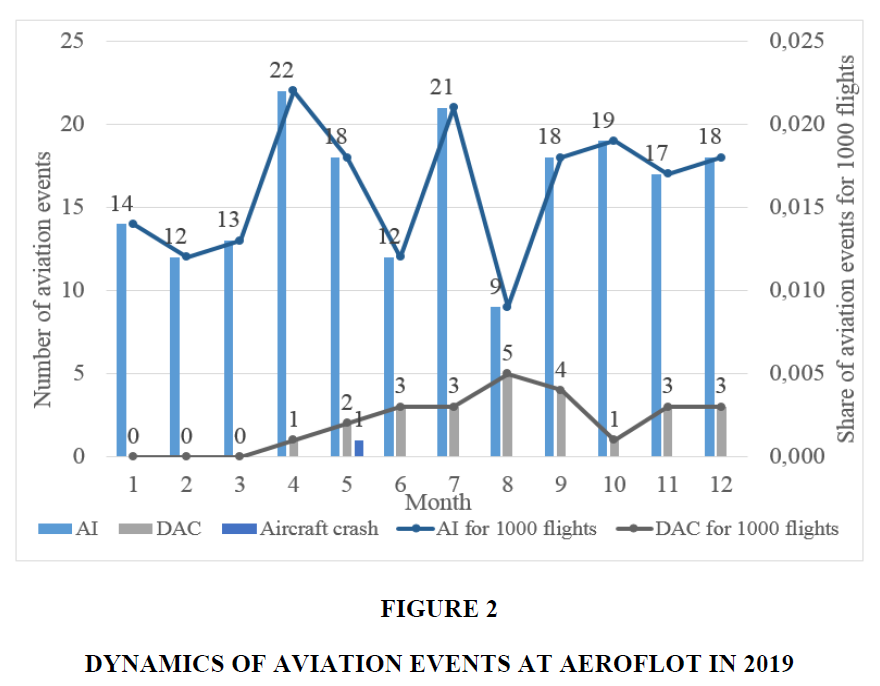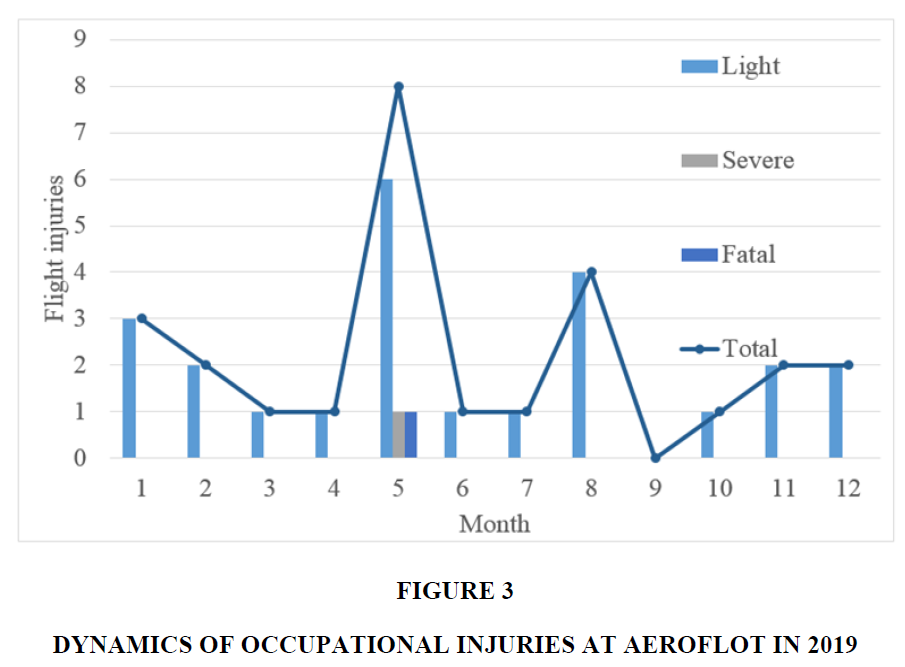Research Article: 2022 Vol: 25 Issue: 1S
Technology for determining and predicting the risk of flight safety and professional risk of an airline
Boris A. Gorelov, Moscow Aviation Institute (National Research University)
Anna A. Burdina, Moscow Aviation Institute (National Research University)
Nataliya V. Moskvicheva, Moscow Aviation Institute (National Research University)
Anna V. Bondarenko, Moscow Aviation Institute (National Research University)
Citation Information: Gorelov, B. A., Burdina, A. A., Moskvicheva, N. V., & Bondarenko, A. V. (2022). Technology for determining and predicting the risk of flight safety and professional risk of an airline. Journal of Management Information and Decision Sciences, 25(S1), 1-8.
Abstract
The study introduces the concept of flight safety risk and professional risk in an airline. The analysis of the regulatory framework for risk analysis is carried out. Methods of risk assessment are analyzed: brainstorming, Delphi, etc. The specific factors influencing the level of flight safety risk are highlighted professional risk in the airline. The quantitative and qualitative parameters of the risk components are determined. An original technology for determining the risk of flight safety and professional risk in an airline is proposed, taking into account the likelihood of events and the impact on the company's activities in order to hedge extraordinary circumstances and make effective management decisions to minimize risks. The practical implementation of the developed technology for assessing the risk of flight safety and professional risk in the airline has been carried out; recommendations for predicting risks have been given.
Keywords
Risk; Forecasting; Flight safety risk; Professional risk; Airline; Probability; Impact; Efficiency; Risk assessment methodology.
Introduction
In modern economic and political conditions, the main focus of any entrepreneurial activity is to minimize costs and, as a result, maximize profits. And the main difficulty that absolutely all companies face in the course of their activities is a large number of various risks.
The relevance of the study lies in the fact that the risk of flight safety and professional risk are present in the activities of any airline, they are decisive, since at present the actual situation almost never corresponds to the planned one due to a large number of external factors influencing the economic result of the company. Therefore, the best that a company can do in an unstable situation is the timely organization of analysis and management of flight safety and professional risk in order to minimize the impact of possible negative consequences. Purpose of the study: to study the issue of flight safety and occupational risk management at PJSC Aeroflot and develop recommendations for assessing and predicting risks.
By risk we mean the uncertainty of the company's performance in the future. TG Kasyanenko defines risk as ". the probability of not receiving income of the planned level in conditions of uncertainty accompanying the activities of the enterprise" (Kasyanenko & Makhovikova, 2020). In the course of their activities, companies face a combination of different types of risks. The organization can manage risks, that is, apply various measures to predict the occurrence of risks and take timely measures to reduce the degree of these risks (Figure 1.)
An increase in the capacity of foreign airlines had a significant impact on the strengthening of Aeroflot's competition. Foreign airlines began to return to the Russian market as early as 2017, but given the continued growth of market volume indicators with the retained share of foreign companies, their passenger traffic increased. Foreign airlines carried 20.8 million passengers on the Russian market in 2019. By 2021, Aeroflot PJSC is the undisputed leader of the Civil Aviation of Russia, the de facto national carrier. It is guided by the Aeroflot Group Development Strategy until 2023 “100 million passengers for the 100th anniversary of Aeroflot”. Set a goal, together with subsidiaries, to transport 90-100 million passengers to 2023 year. The main risks of the activities of carriers (airlines) are the risk of flight safety and professional risk, which affect not only the financial results of operations, but also the image characteristics of the company.
Literature Review
The works of many Russian and foreign researchers are devoted to the mechanisms of risk analysis of enterprises' activities (Dybal, 2014; Balabanov, 2015; Davydova, 2016; Fomichev, 2016; Zhilkina, 2017 ; Vinogradskaya, 2018; Kasyanenko &; Makhovikova, 2020; Vyatkin et al., 2020). Risk analysis mechanisms are presented in international standards and GOST. However, there are no recommendations in the literature on determining the probability of flight safety risk, professional risk in airlines; criteria for assessing the likelihood and impact of risk events on the activities of carriers are not identified. Consequently, it is necessary to revise the regulations for assessing the risk of flight safety, professional risk in airlines at the Russian and international levels.
Material and Methods
The normative document for assessing and insuring risks of business entities is GOST R ISO / IEC 31010-2011, according to which risk assessment is a process that combines identification, analysis and comparative risk assessment (Glukhov &Bakhramov, 2013). Risk assessment is part of the risk management process and is a structured process that identifies ways to achieve the goals set, analyzes the consequences and the likelihood of hazardous events to decide whether to treat the risk. The main methods of risk assessment are (Troshin et al., 2016; Galai et al., 2020):
• Brainstorm
• Structured or semi-structured interviews
• Delphi method, etc.
The most significant risks for carriers (airlines) are flight safety risks and professional risks affecting the efficiency of operations. In order to most accurately and effectively assess a particular risk, it is necessary to reproduce the classification of possible consequences from a particular risk, in other words, the impact of risk on the company's activities in general. The main task in the work to improve the level of flight safety is to minimize the risks associated with damage to aircraft and equipment servicing them (Kovalev, 2014). Aviation security risks mean risks associated with the safety of flights, the safety of using the equipment and property of the airline. The study carried out a classification of flight safety risks based on an analysis of a practical situation, depending on the degree of their impact on the company's activities (Table 1).
| Table 1 Classification of the Assessment of the Impact of Flight Safety Risks of Aeroflot PJSC | ||
| Impact | Risk | Assessment |
| Extremely high | Number of aviation events per year: AI ≥ 150, PVS ≥ 20, Cactastrophes ≥ 2. Destruction of equipment, and destruction or complete loss of property, the value of which exceeds 6 billion rubles. | 5 |
| High | Number of aviation events per year: AI ≥ 100, PVS ≥ 15, one crash. There was significant damage to equipment, significant damage to property, the cost of which was less than 6 billion rubles, physical stress or such a workload that there is no confidence in the correct performance by the operators of their tasks. | 4 |
| Medium | Number of aviation events per year: AI ≥ 70, PVS ≥ 10, no air crashes. Damage worth not more than RUB 3 billion, a serious incident, or operators are unable to fully cope with adverse operating conditions due to increased workload. | 3 |
| Low | Number of aviation events per year: AI ≥ 50, PVS ≥ 5, no air crashes. Damage worth no more than RUB 25 million, a minor incident, or the application of rules in the event of an emergency. | 2 |
| Extremely low | Number of aviation events per year: AI <50, PVS <5, no plane crashes. Minor consequences, minor damage or vandalism. | 1 |
The assessment of safety risks is based on the number of aviation events, which include aviation incidents (AI), aircraft damage (PVS) and disasters. 2019 saw a significant increase in aviation safety events (Figure 2). The number of aviation incidents in 2019 was 193 ( PJSC Aeroflot, n.d. ).
Aviation incident - an event related to the use of an aircraft caused by deviations from the normal functioning of the aircraft, crew, flight control and support services, the impact of the external environment, but not ending in an aircraft accident. Aviation incidents include: equipment failure, birds, lightning, and shortcomings in the organization of work, the aircraft crew and a dangerous approach of the aircraft.
There was also 1 crash and 25 aircraft damage. At the end of 2019, the value of the level of flight safety was 98.93%, with an acceptable risk of 99.9%. Such a large deviation is unacceptable for the airline's operations, since flight safety is the primary focus of minimizing and eliminating risks ( PJSC Aeroflot, n.d. ).
Occupational risks are part of the health and safety risks. The management of these risks is carried out to ensure the safety of the life and health of employees in the course of their work. Occupational risks are classified in Table 2.
| Table 2 Classification of the Assessment of the Impact of Professional Risks of PJSC "Aeroflot" | ||
| Impact | Risk | Assessment |
| Extremely high | Minor accidents ≥ 25. Severe accidents ≥ 3 have occurred: fatal accidents, severe group accidents, and disabling occupational disease (disability). | 5 |
| High | Minor accidents ≥ 20. Severe accidents ≤ 2 have occurred: fatal accidents, severe accidents, group accidents with minor consequences and occupational disability (no disability). | 4 |
| Medium | No severe accidents, minor accident rate ≥ 15. | 3 |
| Low | No severe accidents, minor accident rate ≥ 10: injury requiring medical attention without disability. | 2 |
| Extremely low | No severe accidents, minor accident rate <10: Injury requiring simple first aid measures. | 1 |
Occupational risks are proposed to be divided into the risks of an industrial accident and the risks of occupational diseases. Assessment and analysis of such risks is based on work instructions, previous incidents and emergencies. Professional risks are assessed both in terms of their severity and the number of incidents that have occurred (Figure 3). In terms of severity, industrial injuries are divided into severe and light cases. Severe accidents include: death, serious accident; lungs mean work-related injuries without consequences and without disability.
It is proposed to assess and predict flight safety risks and professional risks based on the level of probability of an event and the impact on the company's activities.

In the forecast case, the probability is assessed on a five-point scale with the assignment of an appropriate assessment Table 3.
| Table 3 Scale for Assessing of Probability and Impact | |||||
| Probability | More than 80% | (60-80%) | (30-60%) | (5-30%) | Less than 5% |
| Impact | Extremely high | High | Medium | Low | Extremely low |
| Assessing of probability and impact | 5 Points | 4 Points | 3 Points | 2 Points | 1 Point |
The final risk assessment is made by multiplying the scores obtained in assessing the impact of risk and its probability (Lyalin &; Vorobiev, 2015; Uvarova, 2015
Results
The analysis of the flight safety and occupational risks of PJSC Aeroflot was carried out on the basis of the risk assessment methodology. It is proposed to use two parameters - the probability of realization and the impact of the consequences of the risk realization (losses, severity of consequences). Since the analyzed year 2019 has already ended, and the risks that have already occurred this year are assessed, the probability of each of them will be 100%, that is, equal to 5 points. Except for a few risks that did not occur at all in the reporting period a scoring of the impact of each risk was performed based on the severity of the consequences suffered by the airline after each risk was met. The results are shown in Table 4.
| Table 4 Flight Safety and Occupational Risk Assessment of PJSC a Eroflot in 2019 | |||
| Risks | Impact | Probability | Assessing |
| Flight safety risks | 4 | 5 | 20 |
| Professional risks | 4 | 5 | 20 |
The assignment of the corresponding points is conditioned by the analyzed events. The flight safety risk is estimated at 20 points, which indicates that this risk falls into the “red” zone. Professional risks in 2019 were estimated at 20 points due to the events that occurred in the plane crash in the second quarter. Operating risks in 2019 are estimated at 20 points, since they include a combination of flight safety risks, professional risks and information security risks. In accordance with the proposed methodology, a forecast of the flight safety and occupational risk of PJSC Aeroflot for 2020 was carried out (Table 5). The company took measures to reduce the likelihood of emergencies.
| Table 5 Aeroflot's Flight Safety and Occupational Risk Forecast for 2020 | |||
| Risks | Impact | Probability | Assessing |
| Flight safety risks | 4 | 4 | 16 |
| Professional risks | 4 | 4 | 16 |
Discussion
The study recommends a methodology for assessing and predicting the risk of flight safety and professional risk in an airline, based on determining the likelihood of a risk event and the impact on the company's activities. However, it is advisable to take into account in the assessment not only the probability, but also the frequency of the risk event at a certain time interval (Lyalin & Vorobiev, 2015;Fomichev, 2016 ).
Conclusion
In the course of the study, the key risks of carriers in the aviation industry were identified. The key risks are highlighted: flight safety risk and professional risk affecting the amount of damage in the airline. The analysis of GOST R ISO / IEC 31010-2011 on risk analysis is carried out, according to which the main methods of risk management are brainstorming, Delphi, etc. The study identifies specific factors affecting the level of risk of flight safety and. professional risk in the airline. The levels of probability of events and impact on the company's activities are grounded. An original technology for determining the risk of flight safety and professional risk in an airline is proposed, taking into account the likelihood of events and the impact on the company's activities. It is recommended to use this methodology for predicting risks, for hedging emergency situations and making effective management decisions to minimize the risk of flight safety and professional risk in the airline.
The authors express their gratitude to colleagues for their help, gratitude for the financial support of the study.
References
Balabanov, I. T. (2015). Risk management. Moscow: Finance and statistics.
Davydova, E. Yu. (2016). Financial risks: assessment methods and management approaches. Territory of Science, 3, 70-75.
Dybal, S. V. (2014). Financial analysis: theory and practice. St. Petersburg: Business Press.
Fomichev, A. N. (2016). Risk management: textbook for bachelors (Fourth edition). Moscow: ITK Dashkov and K, 372 p.
Galai, D., Crowe, M., Minasyan, V. B., & Mark, R. (2020). Fundamentals of risk management. Moscow: Yurayt Publishing House.
Glukhov, V. V. & Bakhramov, Yu. M. (2013). Financial management. St. Petersburg: Special literature.
Lyalin, V. A., & Vorobiev, P. V. (2015). Financial management (management of the company's finances). St. Petersburg: Youth.
PJSC Aeroflot. Official website. (n.d.).
Uvarova, G. (2015). The risk map of business processes can be made practical. Your partner-consultant, 9(9575), March 12.
Vinogradskaya, N. A. (2018). Diagnostics and optimization of the financial and economic state of the enterprise: financial analysis: Workshop. Moscow: MISiS.
Vyatkin, V. N., Hamza, V. A., & Maevsky, F. V. (2020). Risk management: textbook (Second edition, revised and added). Moscow: Yurayt Publishing House.
Zhilkina, A. N. (2017). Financial management. Financial analysis of the enterprise: textbook. Moscow: SRC INFRA-M.


